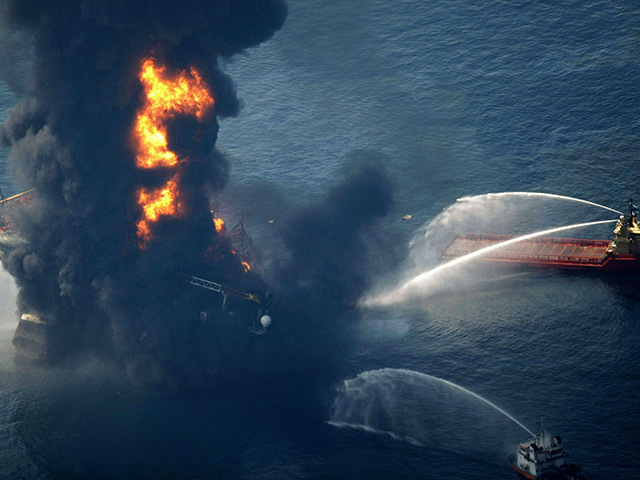
BP Plc (BP/) faces a maximum fine of $13.7 billion after a US judge ruled that the company dumped 3.19 million barrels of oil into the Gulf of Mexico in 2010.
US District Judge Carl Barbier today rejected the US government’s 4.2 million barrel estimate of the spill size, decreasing the potential maximum fine from $18 billion.
Barbier, who conducted a trial without a jury over who was at fault for the disaster, previously found BP’s exploration unit acted with gross negligence in causing the largest offshore oil spill in US history.
The ruling on the spill’s size sets the stage for a trial next week at which Barbier will determine the amount of the fines, based on the law’s provision for as much as $4,300 per barrel released and factors such as what BP did to minimize or mitigate the effects of the disaster.
The London-based oil company has set aside $3.5 billion to cover the pollution fines. BP has already spent more than $28 billion in spill response, cleanup and claims.
The company had taken a $43 billion charge to cover all the costs, according to an October 28 earnings statement. The ultimate cost is “subject to significant uncertainty,” BP said.
BP didn’t extend the 2010 Gulf of Mexico oil spill by lying about its size or misrepresenting the efforts to contain it, Barbier also found.
A spokesman for BP said it would continue to review the courts decision.
He said: “The United States District Court for the Eastern District of Louisiana ruled on the issues raised in the Phase 2 trial of the Deepwater Horizon case: the quantification of oil spilled and BP’s source control efforts following the accident.
“The Court found that 3.19 million barrels of oil were discharged into the Gulf of Mexico and therefore subject to a Clean Water Act (CWA) penalty. In addition, the Court found that BP was not grossly negligent in its source control efforts.
“No penalty has yet been determined. The decisions in the Phase 1 and Phase 2 trials represent steps in the process of assessing a CWA penalty. The third phase of the CWA trial, currently scheduled to begin in the Court on Tuesday, 20 January, 2015, will address the penalty to be assessed.
“During the penalty proceedings, the Court is required to consider the application of eight statutory factors, including the violator’s efforts to minimize or mitigate the effects of the spill: the seriousness of the violation or violations; the nature, extent, and degree of success of any efforts of the violator to minimize or mitigate the effects of the discharge; the economic impact of the penalty on the violator; the economic benefit to the violator, if any, resulting from the violation; the degree of culpability involved; any other penalty for the same incident; any history of certain types of prior violations; and any other matters as justice may require. BP believes that considering all the statutory penalty factors together weighs in favor of a penalty at the lower end of the statutory range.”
The blowout of the Macondo well off the coast of Louisiana in April 2010 killed 11 people aboard the Deepwater Horizon drilling rig and spewed oil for almost three months into waters that touch the shores of five states.
The accident sparked thousands of lawsuits against BP, as well as Vernier, Switzerland-based Transocean Ltd. (RIG), owner of the rig that burned and sank, and Houston-based Halliburton Co. (HAL), which provided cementing services for the project.
Barbier conducted two trial phases in 2013, one on fault and gross negligence, the other on the size of the spill and the efforts to contain it.
Barbier said today that 4 million barrels of oil spewed from the well and agreed with both sides that 810,000 barrels were captured by a siphoning device at the wellhead before they could spill into the Gulf. That left the 3.19 million barrels that will be considered in determining the civil penalty, he said.
The case is In re Oil Spill by the Oil Rig Deepwater Horizon in the Gulf of Mexico on April 20, 2010, MDL-2179, US District Court, Eastern District of Louisiana (New Orleans).
Recommended for you
